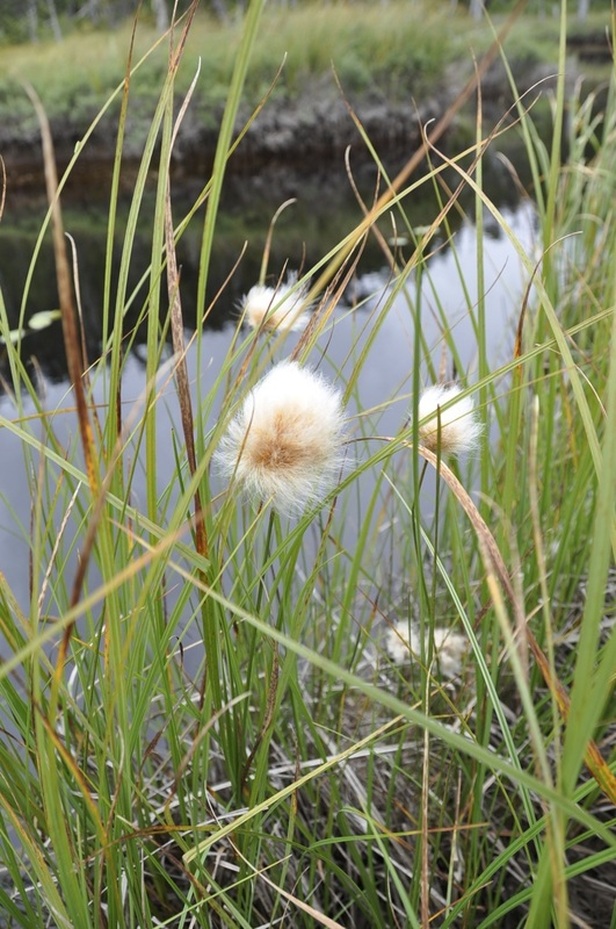Chamisso’s cotton-grass • Eriophorum chamissonis, E. russeolum
|
Identification
Chamisso's cotton-grass is a perennial sedge species that grows to 75 cm tall from spreading rhizomes or stolons. Its leaves are very narrow (to 2 mm wide) and mostly basal. The few (1-3) stem leaves attach along the lower half of the stem. The leaves are folded (channeled) or triangular in cross-section. The inflorescence is a single spikelet at the stem tip, and the fruits are brown, 2-3 mm long, and seed-like. The cottony-look for which species in this genus are named comes from the many long bristles that surround each fruit. The bristles of this species form a light cinnamon-coloured cotton-like tuft at the end of the stem. Habitat & Range Chamisso's cotton-grass forms extensive beds in wet habitats: bogs, fens, ditches, streambanks, lakeshores, and wet meadows from low to middle elevations. It is found across much of northern North America; its west coast range stretches from Alaska to Oregon. |

Photo by Kira Hoffman
|
Similar Species
Species in the Eriophorum genus bear similar cottony tufts when fruiting; Chamisso's cotton-grass can be distinguished from the most common of these species in the region by its solitary head; other single-headed cotton-grasses found in BC generally do not occur west of the Coast-Cascade Mountains. The other common species along the coast is narrow-leaved cotton-grass (Eriophorum angustifolium), which has two or more spikes per stem.
iNaturalist
https://www.inaturalist.org/taxa/162678-Eriophorum-chamissonis
Species in the Eriophorum genus bear similar cottony tufts when fruiting; Chamisso's cotton-grass can be distinguished from the most common of these species in the region by its solitary head; other single-headed cotton-grasses found in BC generally do not occur west of the Coast-Cascade Mountains. The other common species along the coast is narrow-leaved cotton-grass (Eriophorum angustifolium), which has two or more spikes per stem.
iNaturalist
https://www.inaturalist.org/taxa/162678-Eriophorum-chamissonis
References
Eriophorum chamissonis C.A. Mey. In Klinkenberg, Brian. (Ed.). E-Flora BC: Electronic Atlas of the Plants of British Columbia. Lab for Advanced Spatial Analysis, Department of Geography, University of British Columbia, Vancouver. Accessed 28/08/2014.
Pojar, J. and MacKinnon, A. (1994). Plants of Coastal British Columbia. Vancouver, BC: Lone Pine Publishing. P. 407.
Authors and editors of page
Kelly Fretwell and Brian Starzomski (2014).
Eriophorum chamissonis C.A. Mey. In Klinkenberg, Brian. (Ed.). E-Flora BC: Electronic Atlas of the Plants of British Columbia. Lab for Advanced Spatial Analysis, Department of Geography, University of British Columbia, Vancouver. Accessed 28/08/2014.
Pojar, J. and MacKinnon, A. (1994). Plants of Coastal British Columbia. Vancouver, BC: Lone Pine Publishing. P. 407.
Authors and editors of page
Kelly Fretwell and Brian Starzomski (2014).




